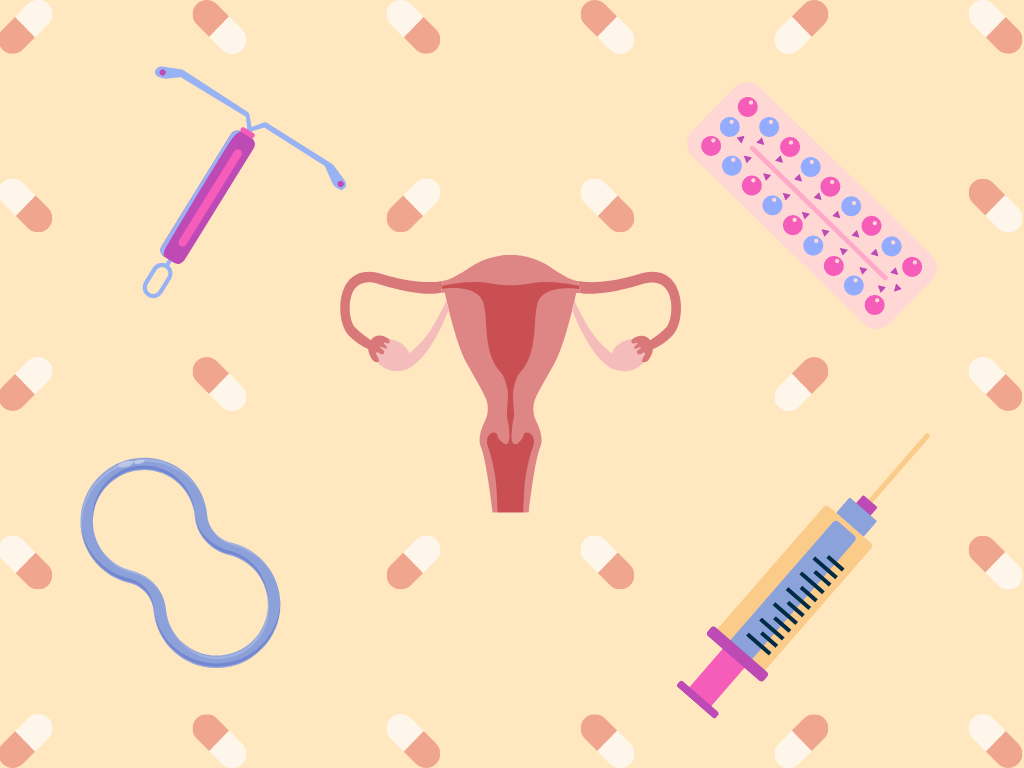One of my favorite features of my ADHD brain is the persistent (and misguided) optimism about my ability to Get Things Done. Taking on projects is truly one of the greatest joys in my life — but before getting diagnosed, it was also my greatest downfall.
There was a distinct pattern to my weeks: One day, I'd be riding high on the thrill of multitasking, performing superhuman feats of productivity, helping out friends, and topping it all off by cooking a delectable dinner (from scratch, of course).
Before long, I'd pick up one more assignment and suddenly find myself feeling a little blurry, more distracted than usual. I'll just have to push through this, I'd think to myself.
I'd stay late to "catch up" on my overcommitments.
I snap at a coworker for no reason and cry in my car at lunch.
What is wrong with me?
Before I knew it, I was using up my sick days because I literally could not get out of bed.
I couldn't see it then, but now it's so obvious: I was deep in the vicious cycle of ADHD burnout.
Too long; didn't read
- ADHD burnout is a cycle of stress and overwhelm characterized by an increase in ADHD symptoms, a decrease in coping strategies, and exhaustion.
- ADHD burnout can have adverse effects on work, relationships, and health.
- Plenty of rest, awareness of our needs, and setting boundaries around commitments can help us recover from (and prevent future) ADHD burnout.
What is the ADHD burnout cycle?
Burnout has been a part of the cultural lexicon for a while now, but for those with ADHD burnout, the causes, mechanisms, and effects are slightly different.
ADHD burnout runs in cycles. It's a series of five phases that feed into each other as our stress and overwhelming emotions build up until, finally, our poor ADHD brains can't take it anymore, and we crash.
The 5 phases of the ADHD burnout cycle
The five ADHD burnout phases are:
- Trigger phase
- Chronic stress phase
- Reduced capacity phase
- Crashing phase
- Recovery phase
Let's take a closer look at the phases of the ADHD burnout cycle and how they interact with each other.
1. Trigger phase
The trigger phase often coincides with increased demands on our time and energy. These demands may be external, like a heavier workload at your job, or they may originate internally, like when you have a sudden stroke of inspiration and decide to DIY a home office makeover (and yes, I'm speaking from experience). Whatever the cause, our stress increases, and we exert more energy to keep up.
People in the trigger phase of the burnout cycle may not feel a sense of overwhelm yet. In fact, this phase can feel good.
Because ADHDers tend to use external pressure as motivational tools, we may experience the trigger phase as a period of productivity and high motivation.
In reality, because the demands exceed our resources, this situation is unsustainable. A common ADHD response to this kind of stress is neglecting self-care to work more, draining our batteries even faster.
2. Chronic stress phase
As our stress persists, it affects our work, relationships, and daily life.
What does chronic stress look like?
- Sleep problems
- Apathy toward things you usually enjoy
- Withdrawal from friends and family
- Low self-worth and negative self-talk—Your inner critic may be in overdrive, berating you for every little mistake, or you might feel like you're never good enough.
- Emotional dysregulation—Bursts of intense anger or overwhelming feelings of sadness or hopelessness
- High irritability—lashing out at friends, coworkers etc. for minor reasons
- Struggling with time management even more than usual
- Chronic procrastination
- Task avoidance and "procrastivity"
It may help to think of the chronic stress phase as a cycle within a cycle.
You might have noticed that many chronic stress symptoms above sound like our everyday ADHD symptoms. While these are common challenges for ADHDers, when we are in the chronic stress phase of ADHD burnout, these symptoms are much stronger and more persistent.
We struggle more intensely and may experience harsher consequences such as missed deadlines, relationship stress, and shame spirals. This further increases the stress, which makes the symptoms worse… you get the picture.
This phase can last weeks or even months - hence the "chronic" designation.
3. Reduced capacity phase
The reduced capacity phase of ADHD burnout refers to the point in the cycle just before we crash. We can no longer keep going at the pace we've been trying to maintain. At this point in the cycle, the brain and body are doing everything they can to get us to slow down, but the pressures of our demands force us to keep going.
You may make more mistakes, face increased executive dysfunction, and even miss work. A 2022 study in Sweden examined the effect of work-related stress and mental health problems in adults with ADHD. The data showed that ADHD adults had 8-24 more sick days per year than their non-ADHD peers.1
Signs to look out for
The reduced capacity phase is marked by an increase in some of the symptoms mentioned above, but you may experience the effects of prolonged stress appearing in physical symptoms.
Symptoms of this phase can include:
- Fatigue—having no energy for daily tasks and feeling exhausted even when you get the right amount of sleep
- Chronic headaches
- Difficulty falling asleep or staying asleep
- Digestive problems and stomachaches
- Increased susceptibility to sickness—Catching colds or viruses more frequently and longer recovery time from illnesses
- Neglecting self-care and personal needs
- Resentment or cynicism toward coworkers, friends, or family
- Social isolation—withdrawing from friends
4. Crashing phase
When our brains and bodies really can't continue going the way they have been, we crash, and it's as painful as it sounds. Chronic stress and overwhelm can significantly affect our health and daily functioning. After weeks - or even months - of pushing ourselves past our limits, our bodies and brains are so worn out, it becomes impossible to function.
At this point in the cycle, we can no longer push through, and it can take a long time to get through this event and begin to recover.
5. Recovery phase
After the crash, we enter the recovery phase of the ADHD burnout cycle. During this phase, our brains and bodies attempt to repair the damage accumulated over the weeks or months of chronic stress.
Some best practices for the recovery phase
- Practice saying "no" whether at work or in your personal life - to avoid over-committing yourself.
- Err on the side of doing less. If you're not totally sure you have the energy to complete that task right now, I've got news for you: you don't!
- Engage in light to moderate physical activity, which has been shown to buffer the harmful effects of ADHD burnout.2
- Focus on getting enough sleep each night - the recommended amount is 7-9 hours.
- Begin building a practice of "checking in" with your body to assess your needs: Are you hungry or thirsty? Do you need a screen break or a light stretch? (Unclench your jaw while you're at it.) When was the last time you moved your body? Do you need to recharge with a nap? Or with something fun or inspiring that gives you pleasure?
- Learn to identify the early warning signs of the "burnout danger zone." This can be achieved through practicing mindfulness and tracking your mood and energy.
- Connect with an external support system, such as a mental health professional, support group, or ADHD coach.
Embracing the recovery phase is crucial. Without the recovery phase, we can't break out of the ADHD burnout cycle. I repeat: We cannot break the cycle if we don't take the time to recover. It can be difficult to allow yourself the time and space to heal. But if we don't recover, we return to building stress and overwhelm until we hit our next crash.
Trapped in the ADHD burnout cycle? The Inflow app is designed to help ADHDers break free from stress and overwhelm. Gain insight into your burnout triggers, develop coping strategies, set realistic goals, and connect with a supportive community of ADHDers — Get started with Inflow today!
Final thoughts
When I realized my life had become a seemingly unending cycle of stress, overwhelm, and exhaustion, I knew something had to change. And with practice, it has. Don't get me wrong – I'm still the 'Yes' Girl. I still overcommit myself every so often. But over time, I've learned to notice when I need to slow down and turn to rest and recovery before the stress takes over.
These days, I'm the 'Yes' Girl, the 'No' Girl, and the Rest Girl, and the Recovery Girl.
And that's a great feeling.
If you are struggling with ADHD burnout, it's important to know that you can break the cycle. While it can feel impossible to devote your time and efforts to recovery, the payoff (benefits to health, functioning, and relationships) far outweighs the cost.
Sources
1 BMC Psychiatry | Stress and work-related mental illness among working adults with ADHD: a qualitative study (2022)
2 Brain Sciences | Occupational Burnout Is Linked with Inefficient Executive Functioning, Elevated Average Heart Rate, and Decreased Physical Activity in Daily Life - Initial Evidence from Teaching Professionals (2022)






.jpg)

